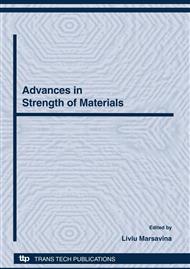p.105
p.113
p.123
p.131
p.141
p.153
p.161
p.169
p.177
A Pull-Shear Test for Debonding of FRP- Laminates for Concrete Structures
Abstract:
The reinforcement of concrete structures with laminates of carbon fibers CFRP (Carbon Fiber Reinforced Polymer) began in the 1970’s but laminates were not used extensively until the 1990’s.Nowadays it is one of the most promising technologies due to the good mechanical characteristics of the laminates and their easy manipulation. In the near future, laminates will play a fundamental role in the rehabilitation projects of buildings. Laminates bond to the concrete by means of resins of epoxy type. The capability of the reinforcement depends directly on the proper behavior of the interface laminate-concrete. The laminate helps to bear loads while the concrete is able to transfer stresses to the laminate. The safety factor of the reinforcement can be guaranteed if we can predict the behavior at the interface between both materials. In this work a test of pure shear has been developed to better understand the behavior at the interface between the laminate and the concrete.
Info:
Periodical:
Pages:
141-151
Citation:
Online since:
October 2008
Authors:
Price:
Сopyright:
© 2009 Trans Tech Publications Ltd. All Rights Reserved
Share:
Citation:


